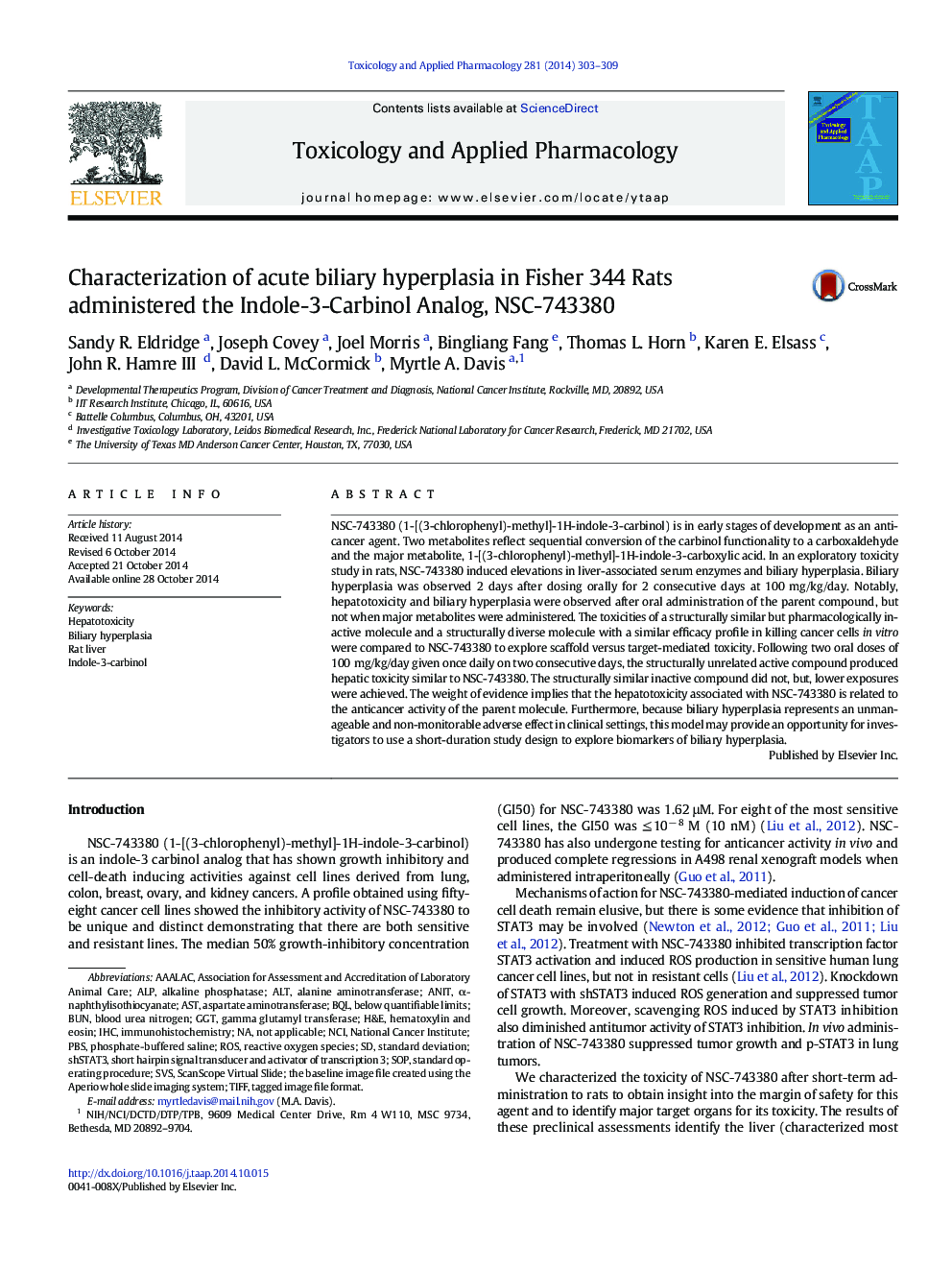| Article ID | Journal | Published Year | Pages | File Type |
|---|---|---|---|---|
| 5846080 | Toxicology and Applied Pharmacology | 2014 | 7 Pages |
Abstract
NSC-743380 (1-[(3-chlorophenyl)-methyl]-1H-indole-3-carbinol) is in early stages of development as an anticancer agent. Two metabolites reflect sequential conversion of the carbinol functionality to a carboxaldehyde and the major metabolite, 1-[(3-chlorophenyl)-methyl]-1H-indole-3-carboxylic acid. In an exploratory toxicity study in rats, NSC-743380 induced elevations in liver-associated serum enzymes and biliary hyperplasia. Biliary hyperplasia was observed 2Â days after dosing orally for 2 consecutive days at 100Â mg/kg/day. Notably, hepatotoxicity and biliary hyperplasia were observed after oral administration of the parent compound, but not when major metabolites were administered. The toxicities of a structurally similar but pharmacologically inactive molecule and a structurally diverse molecule with a similar efficacy profile in killing cancer cells in vitro were compared to NSC-743380 to explore scaffold versus target-mediated toxicity. Following two oral doses of 100Â mg/kg/day given once daily on two consecutive days, the structurally unrelated active compound produced hepatic toxicity similar to NSC-743380. The structurally similar inactive compound did not, but, lower exposures were achieved. The weight of evidence implies that the hepatotoxicity associated with NSC-743380 is related to the anticancer activity of the parent molecule. Furthermore, because biliary hyperplasia represents an unmanageable and non-monitorable adverse effect in clinical settings, this model may provide an opportunity for investigators to use a short-duration study design to explore biomarkers of biliary hyperplasia.
Keywords
AAALACTIFFPBSGGTBQLNCIα-naphthylisothiocyanateANITSVSSOPALTH&EIndole-3-carbinolROSASTAspartate aminotransferaseAlanine aminotransferaseALPAlkaline phosphataseAssociation for Assessment and Accreditation of Laboratory Animal Carestandard deviationImmunohistochemistryIHCTagged Image File FormatBUNstandard operating procedureHepatotoxicitynot applicablePhosphate-buffered salineNational Cancer Instituteblood urea nitrogenHematoxylin and EosinRat livergamma glutamyl transferaseReactive oxygen species
Related Topics
Life Sciences
Environmental Science
Health, Toxicology and Mutagenesis
Authors
Sandy R. Eldridge, Joseph Covey, Joel Morris, Bingliang Fang, Thomas L. Horn, Karen E. Elsass, John R. III, David L. McCormick, Myrtle A. Davis,
